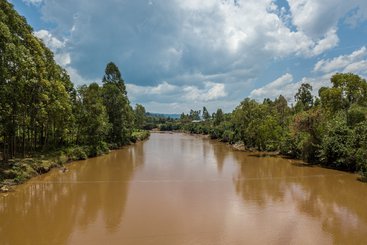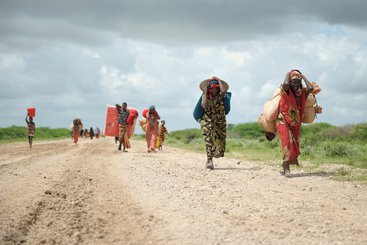A highly significant United Nations biodiversity conference opens today in Montreal, Canada and under the co-leadership of Canada and China.
The Convention on Biological Diversity’s COP15 has a great deal riding on it: governments are due to decide a post-2020 Biodiversity Framework to protect species and ecosystems. A 2030 goal will be set, nested within a longer-term goal for 2050.
So what’s at stake, and how can global ambition for conserving biodiversity be streamlined with ambitions for a safer climate?
What’s at stake
The world’s biodiversity and natural habitats are degraded and in danger of further harm. Three-quarters of land-based and two-thirds of marine environments have been significantly altered by human activities. Over the past three centuries, more than 85% of wetlands have been lost. In the past half-century, wildlife populations have declined by 69%. The International Union for Conservation of Nature’s (IUCN) Red List of endangered species finds that more than a quarter of species are at risk of extinction.
COP15 comes on the heels of the major UN climate change conference last month, COP27. While both conventions aim to tackle mounting environmental crises, they have common and intersecting solutions, too.
Solving the climate and biodiversity crises will require transforming our relationships with natural resources on land, freshwater and coasts and in oceans. Experience to date shows that rich country governments are paying insufficiently for global public goods of carbon-rich, biodiversity-rich ecosystems in the Global South, but also that globalised supply chains do not yet internalise and remedy harms to nature. A step change in finance and economics far beyond today’s voluntary standards is needed to restore planetary health.
Tackling climate change while saving biodiversity
Here are some of the ways that the nature and climate crises are interconnected, and why it’s critical to act ambitiously and wisely on both.
The Intergovernmental Panel on Climate Change (IPCC) found that the managed land sector can provide 20-30% of the greenhouse gas savings needed by 2050 to limit global warming to 1.5oC or 2oC. Countries can do this by expanding conservation and sustainable use of land.
Some land use choices have immediate climate benefits: like the protection of existing, carbon-rich peatlands, rangelands, forests and mangroves and the integration of greenhouse gas-storing techniques in agriculture. Other choices take some decades to realise their full climate change mitigation benefits, such as native tree-planting in appropriate locations. ODI’s factsheets on climate impacts and adaptation solutions describes how these steps could benefit African regions and avoid maladaptation.
Managing ecosystems to mitigate climate change can have many additional benefits – and are often framed as ‘nature-based solutions’. Associated benefits include bolstering local livelihoods, and people’s and species’ resilience to climate shocks. However, to achieve such multiple benefits, climate change mitigation must include local and indigenous communities fully in decision-making, respect indigenous knowledge systems, and protect and enhance native species. These aspects are critical to ensure that climate actions are appropriate and avoid harm. For this reason, the term ‘nature-based solutions’ has attracted some controversy, when it’s been seen as greenwashing for undemocratic and unsuitable activities. As our past research shows, there are procedural ways to get the governance and management right.
On the other side of the coin, the higher the increment of global warming, the greater the risk to biodiversity. Some species and ecosystems are particularly sensitive. For example, tropical coral ecosystems are at high risk of loss and damage at today’s levels of global warming, which is 1.1oC above preindustrial averages. Rising global temperatures have already accelerated the rate of species extinctions.
If biodiversity is further lost, the IPCC concludes this will undermine climate change mitigation goals: in a heating world, less biodiverse ecosystems may be more susceptible to shocks such as wildfires, plant diseases and pests (compared to ecosystems with more natural functions intact), and so they may fragment and degrade faster, becoming less and less able to store greenhouse gases.
Mitigation solutions such as burning biomass for energy (including in industrial power plants) can actively erode biodiversity if sourced from species-rich habitats. This flashpoint is highlighted by scientists in an emergency letter to negotiators in Montreal this week. In this and other examples, such as the mining of rare earth minerals for renewable technology development, protecting biodiversity and acting on climate change can sometimes seem at odds. They can expose difficult trade-offs over uses and management of finite natural resources.
Action on climate change and action on biodiversity loss could create a virtuous circle. Failure to act on both coherently could create a vicious cycle.
Governments and businesses must act on both climate and biodiversity together – and with firm intent. Risk-informed development approaches are essential for managing trade-offs.
A common resolve to ‘do better’
The climate and biodiversity conventions both face a global scorecard that says: ‘must do better’.
The Strategic Plan for Biodiversity 2011-20 with its Aichi targets, was adopted in 2010 and signed by 196 governments (all UN members except the United States). A total of 194 countries developed National Biodiversity Strategies and Action Plans. However, all the Aichi targets were missed at global level and not a single one was achieved in full by 2020.
The draft text for negotiation in Montreal this month lists the reasons why the Aichi targets were not met: lack of coordinated governance; lack of socially inclusive processes to govern the land, sea and water; lack of finance. It may sound like a familiar refrain for climate change negotiators, who face dire statistics annually and similar root causes, which water down ambitious action. Global carbon emissions in 2021 were their highest level ever, six years after the landmark Paris Agreement was signed.
Nonetheless, biodiversity negotiators hope for a ‘Paris Agreement moment’ at the Montreal biodiversity conference this month. While it is not easy to distil the diverse uses and values of ecosystems to a single metric, nature champions believe that the clarity of the Paris Agreement’s temperature target, and the science behind it that calls for global emissions to fall to net zero by 2050, are a galvanising force. Quantitative outcome targets can motivate funding, not to mention economic incentives and behavioural shifts, all of which are needed to protect and restore biodiversity. The targets agreed for ecosystem and biodiversity conservation and restoration in Montreal should be robust and set aspirations high, but within the framework of accountabilities discussed below.
(At the time of writing, negotiation texts were still bracketed. It has not yet been agreed how ambitious countries will be, to halt and reverse biodiversity and ecosystem loss, whether a proposal to increase conservation measures to 30% of land and sea will be approved and/or whether that target will include important requirements, such as indigenous rights.)
The bottom line: finance and accountability
Success in the next decade of biodiversity action will in part be measured by finance flows for restoring nature. Are business practices and the economic policies of government aligned with saving and restoring nature, as well as the climate? As the Dagupta Review famously found last year: will stakeholders recognise that our economies are embedded in nature, not external to it – and act on this?
For comparison’s sake, the Glasgow climate summit, COP26, generated an important Leaders’ declaration on forests, which pledged to halt and reverse global forest loss by 2030. The links with biodiversity are clear. A follow-up meeting at COP27 to put the Leaders’ pledge in motion was dogged by ‘no shows’ from large forest nations such as Brazil, China, Democratic Republic of Congo and Russia and an underwhelming amount of money in donor pledges. The invitation is still open.
Biodiversity champions can learn from experiences in the climate arena and particularly as regards ‘multidirectional accountability’.
Donors rightly require accountability from finance recipients, in order to unlock funding; but recipients increasingly and rightly demand stronger reverse accountability, to them. As ODI and partners are increasingly showing in the climate arena, the accountability of donors to recipient countries and communities is critical – to ensure local needs and indigenous knowledge are amply respected.
Governments could report every two- to four-years on biodiversity conservation needs and gaps, conservation and restoration and achievements, in a virtuous cycle of action and funding that could be aligned with climate reporting under the Paris Agreement.
Donor governments could provide finance, technology transfer and capacity strengthening, in response to demand, to ease recipient countries’ reporting burdens and increase their efficiencies (again, as could and should happen in the climate domain). Biodiversity and climate are both global goods: we’d all win.
A companion ODI Insight unpacks the need for COP15 to have its '2.1(c) moment'and show progress towards greater nature-consistent financial flows.




